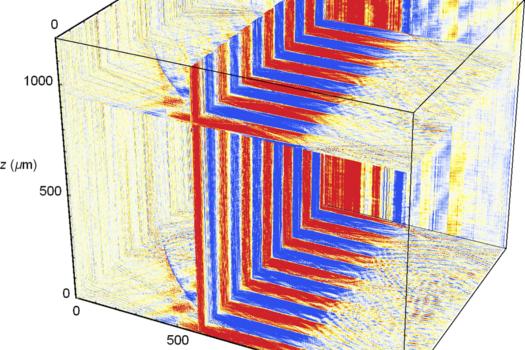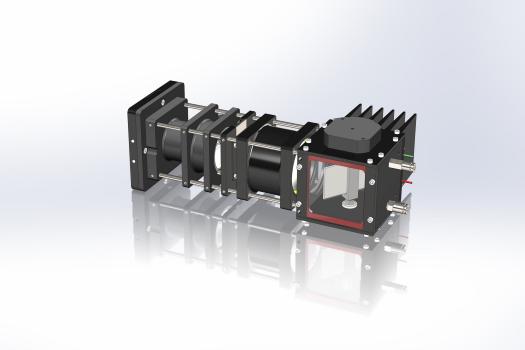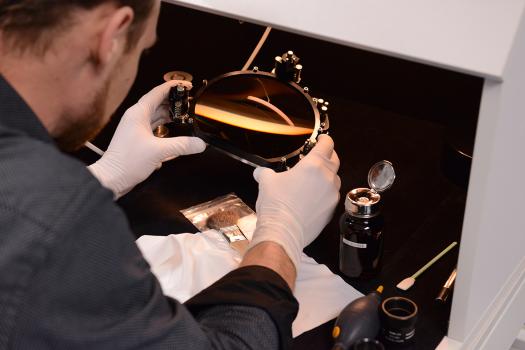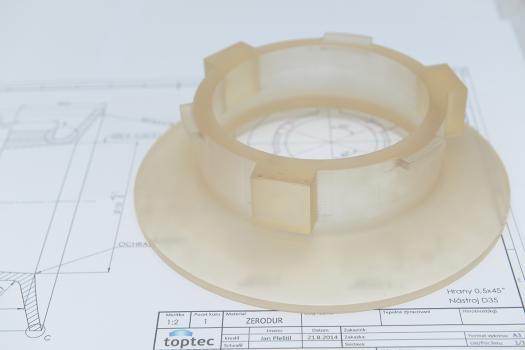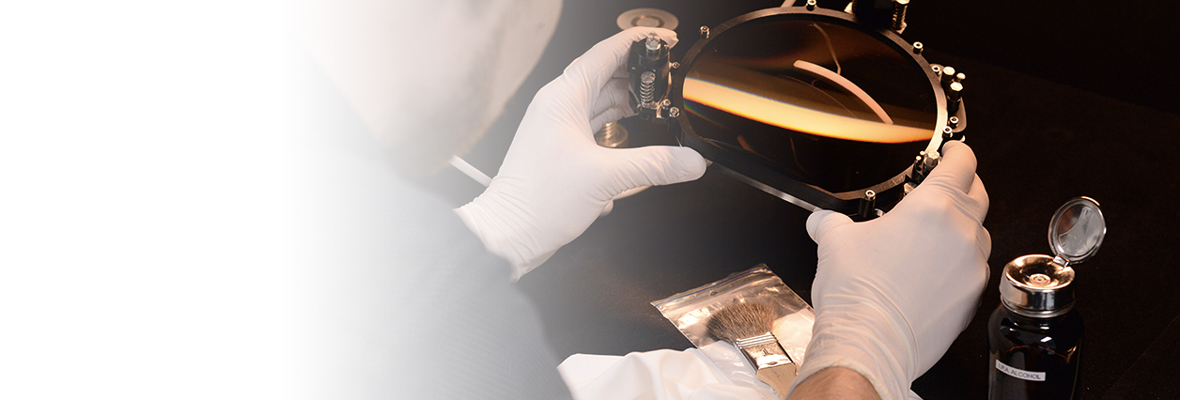
Space Optics
The European Space Agency (ESA) is Europe’s gateway to space. ESA provides, develops, and coordinates Europe’s access to space technologies and applications. ESA is an international organization with 22 Member States and its mission is to design and implement the European space programme. By cooperation and pooling of the financial resources and know-how of its members’ experts, ESA is able to engage in activities and achieve goals far beyond the scope of any single European country.
Currently, our scientists are involved in solving a number of space research projects, both for ESA (METIS and ASPIICS) and for some of its prime contractors, such as Airbus Defence and Space SAS (TIRI project), or OHB Italia S.p.A (NEOSTEL project).
METIS (The Multi Element Telescope for Imaging and Spectroscopy)
The solar coronagraph telescope METIS is going to be one of 10 main experiments on the Solar Orbiter satellite imaging the solar corona in three different spectral regions:on the He II spectral line at 30.4 nm, on the HI spectral line at 121.4 nm, and in visible polarized light at 590 - 650 nm. Our team is responsible for the realization of the two main mirrors (M1 and M2) of the METIS telescope. PDF
ASPIICS (Association de Satellite Pour l'Imagerie et l'Interferometrie de la Couronne Solaire)
The ASPIICS project is a part of the technological mission PROBA-3 dedicated to the demonstration of the technology and techniques involved in satellite formation flying. ASPIICS is also the very first solar coronagraph telescope that is divided into two independent satellites separated by a distance of 140 m. The TOPTEC Centre is responsible for the overall optical design and tolerancing of the entire optical system and for its final production. PDF
NEOSTEL (Near Earth Object Survey Telescope)
The goal of the NEOSTEL project is the development and implementation of a ground-based network of telescopes distributed along the Equator, which can observe the sky and automatically search for potentially dangerous Near Earth Objects. The new concept of the telescope, nicknamed “Fly-Eye” due to its similarity to the anatomical structure of a fly’s compound eye, enables an expansion of the field of view while maintaining compact dimensions. Our team provides the aspherical lenses for the Fly-Eye telescope and develops the testing elements. PDF
TIRI (Thermal InfraRed Imager)
The project is focused on verifying the possibility of the use of uncooled microbolometer sensors for Earth observation. The goal is to develop an optical system that enables high resolution infrared imaging of the Earth from the low orbit. Our Centre is solving the optical design of the system and performing a detailed analysis of its characteristics in order to achieve its optimization with respect to its manufacturability.
FLEX (FLuorescence EXplorer)
Complex optical analysis of the system, assembly of individual optical and mechanical elements and their further integration into a fully functional system. The analysis and tests include characterization of optical surface scattering functions, bonding of opto-mechanical interfaces to minimize vibration shocks on optics, vibration and thermal tests and final full optical characterization of the system. The aim of the mission is to map vegetation fluorescence to quantify photosynthetic activity which will improve the understanding of carbon movement between plants and the atmosphere. PDF
ARIEL (Atmospheric Remote-sensing Infrared Exoplanet Large-survey)
TOPTEC involvement in the project includes the design, development and realization of common optics setup, including its holders and adjustment capabilities.The mission will measure the chemical composition and thermal structures of exoplanets, linking them to the environment of the host star. PDF
TRUTHS (Traceable Radiometry Underpinning Terrestrial- and Helio-Studies)
TRUTHS mission will be a ‘standards laboratory in space’, setting the ‘gold standard’ reference for climate measurements. Carrying a cryogenic solar absolute radiometer and a hyperspectral imaging spectrometer as well as a novel onboard calibration system, TRUTHS will make continuous measurements of incoming solar radiation and reflected radiation to evaluate Earth’s energy-in to energy-out ratio.
Within the TRUTHS project, TOPTEC is providing guidance on manufacturing of complicated optical elements and is also developing technology to deliver large optical prisms and polarisation scramblers and thus support the project to achieve its demanding goal.
S-BOC of VISDOMS (Verification of In-Situ Debris Optical Monitoring from Space)
VISDOMS with it's space-based optical component (S-BOC) with a primary objective of demonstrating statistical monitoring of small debris in low-Earth orbit and beyond, and a secondary objective of demonstrating geostationary surveillance from satellites in low-Earth orbit. It will use a passive optical telescope with a wide field of view and be flown on a dedicated micro-satellite or as a hosted payload on a third-party satellite. The plan is to launch a hosted payload in 2026 and the full mission in 2030.
In current phase of the project, TOPTEC is co-working with Airbus on optical and mechanical design of the S-BOC component.
QUVIK (Quick Ultra-Violet Kilonovae Surveyor)
At the moment, QUVIK is in the phase of processing a feasibility study of a space mission with the primary objective of optical observations of so-called kilowaves, i.e. the merger of two neutron stars, in the ultraviolet region of the spectrum. These events are so energetic that they can theoretically produce elements heavier than iron in bulk. This makes them extremely important in explaining the presence of these elements in the universe and on Earth. The project is carried out in collaboration with VZLÚ a.s., MU and PEKASAT. TOPTEC is the subcontractor responsible for the development of the so-called optical payload, i.e. the complete instrument consisting of the optomechanics of the telescope and cameras for the FUV and NUV spectral regions.
Contact
Radek Melich, Ph.D.
Tel.: +420 487 953 917
Mob.: +420 776 783 952
Email: melichr@ipp.cas.cz

